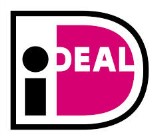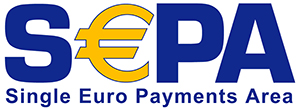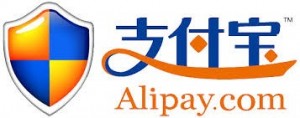Although credit cards definitely rule ecommerce, there are some country-specific payment methods you should have in your cart. Serving local markets with methods familiar to customers increases your conversion rates.
Customers around the world have their favorite ways to pay, whether it’s Konbini in Japan, real-time banking in Europe or credit card installments in Brazil. “Payment preference is always based on culture,” says Robin Blume, product manager of payments at cleverbridge. “You have to recognize payment customs to know which methods your customers are comfortable with, and then make sure you include them in your checkout process.”
Payment Trends
Here’s a rundown of some of the most popular alternative payment methods around the globe.
Europe
Europe is a very heterogeneous payment market. While credit card penetration is rising, an increasing amount of customers in Europe are using real-time banking options where they are redirected to their online bank accounts to submit payment. During the checkout process, customers can choose real-time bank transfer as a payment option. Then they are given the option to choose their bank, after which they are forwarded to their online bank account to finalize payment. Customers instantly receive the product after the payment is initiated in their online banking interface.
“People feel comfortable with online banking,” says Blume. “They are able to use familiar systems without being forced to create any new user names or passwords.”
In Finland and Sweden, real-time bank transactions account for up to 35 percent of the market share. Each bank, however, has their individual real-time banking solution. In Finland up to 10 bank brands provide a real-time banking solution, and in Sweden, four banks offer the service.

In the Netherlands, iDeal real-time banking accounts for more than 60 percent of payments conducted online.
Europe’s Sofortüberweisung enables customers to key in online banking credentials (login, password and transaction number) via a secure technical gateway that automatically initiates the wire transfer in their bank accounts and confirms the transaction to merchants in real-time. Sofortüberweisung is most popular in Germany, but has extended its reach to Belgium, Spain, Switzerland, the Netherlands, United Kingdom, France, Italy, Austria and Poland.
SEPA (Single Euro Payments Area) Direct Debit allows a creditor to collect funds from a debtor’s account provided that a signed mandate has been granted by the payer to the biller. This “signed paper mandate” currently makes it difficult for ecommerce merchants to use SEPA Direct Debit, but hopefully a new European Payments Counsel rule modification due in November will alleviate the process of signature mandate handling for ecommerce.

“SEPA Direct Debits could be an interesting opportunity, especially if you are managing subscription payments,” says Blume. “It allows you to create long-term billing relationships if you can handle the associated risks.”
United States
With 80 percent of online purchases made with credit cards, the United States is a rough environment for alternative payments methods. However, one-click checkout options like PayPal and Amazon Payments are definitely not the only alternative options.
Bitcoin, a digital currency with a mysterious origin, is appealing to a growing number of digital merchants in the U.S. Bitcoin is an extremely volatile, decentralized digital currency that uses cryptography to control the creation and transfer of money. It allows people to make one-to-one transactions, buy goods and services and exchange money across borders without banks, credit card issuers or other third parties – and their fees.
With low transaction fees, instant payment processing, hassle-free international exchange and no chargebacks, Bitcoin is appealing to large and small retailers across the globe. The list of retailers that accept the digital currency as a payment option is growing. Overstock.com was one of the first large retailers to accept the currency. Now shoppers can use Bitcoins at major retailers like Amazon, CVS, Target, Victoria’s Secret, Zappos and Whole Foods by purchasing gift cards through Gyft, a digital gift card platform that lets you manage your gift cards via their mobile app.
Brazil
“Cross-border acquisition along with the complexity of the Brazilian taxation system makes selling in Brazil a challenge,” says Blume. “Brazilians typically have fairly low credit card limits, so it’s smart to offer credit card installment plans and Boleto Bancario because they allow customers to increase their spending power.”

Up to 50 percent of online purchases in Brazil are made with credit card installments called parcelas. With credit card installments, customers can split a bill in up to 12 monthly increments depending on the merchant’s set-up.
Boleto Bancario is another very popular payment method in Brazil. The payment process for Boleto Bancarios is similar to wire transfer and cash payment methods. Customers receive a prefilled Boleto Bancário bank slip. They can either pay online, pay with cash at any bank branch or authorized processors such as drugstores, supermarkets or post offices, or pay at a regular banking point.
The Brazilian bank system confirms paid Boleto Bancários once per day, and automatically provides a payment confirmation 3-5 days later via API.
Japan
Because of their cash-oriented culture, many Japanese consumers prefer to pay for online goods with cash at convenience stores called Konbinis. With up to 25 percent of the market, Konbini payments are the second most common after credit cards. Konbini is a must-have payment method to serve your Japanese customers.

China
Alipay is one of the most important ecommerce payment options in China. Just like PayPal, it provides a wallet functionality and enables instant gratification once the payment is confirmed. Processing almost half of China’s online payments, Alipay is another method you should definitely have in your payment arsenal.

UnionPay, the Chinese credit card organization, is slowly picking up speed as well. While the last two years it has had only had a fairly small market share (approximately eight percent), the Chinese credit card is becoming more and more relevant in ecommerce.
Russia
“Approximately 48 percent of Russian consumers do not have bank accounts,” says Blume. This makes the ability to pay with cash extremely important for ecommerce vendors.”
Online wallets like WebMoney ,Yandex and QIWI Wallet that enable online payments are growing in Russia. QIWI Wallet also facilitates cash payments by allowing consumers to purchase online and pay with cash at terminals across the country, which helps target consumers without bank accounts.
Keystone
To stay in sync with potential customers in markets across the globe, look beyond credit cards to trending local payment methods and offer what you can.
